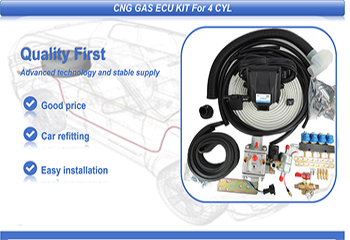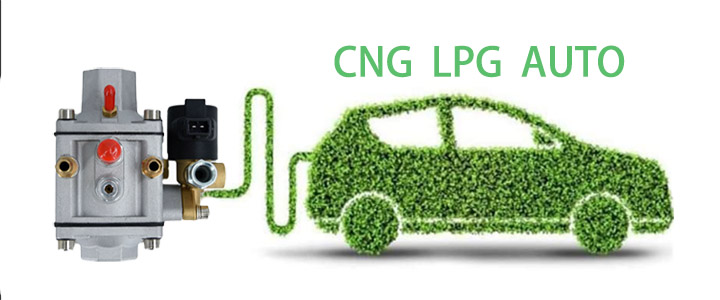Introduction to the CNG vehicles
What is CNG vehicle
Compressed natural gas vehicles are vehicles that use compressed natural gas (CNG) as their fuel. For in use vehicles, standardized gasoline vehicles are modified by adding a dedicated compressed natural gas device while retaining the original fuel supply system, forming a compressed natural gas vehicle. The conversion of fuel only requires a toggle switch. Adding natural gas once can travel about 200 kilometers, especially suitable for buses, city taxis, minibuses with round-trip mileage not exceeding 200 kilometers, vans, and other vehicles in the workplace.

Advantages of CNG vehicles
1. Fuel prices are cheap; 2. Low exhaust pollution from automobiles; 3. No carbon buildup and minimal damage to vehicle components; 4. Safe and reliable; 5. Vehicle modification is simple; 6. The vehicle runs smoothly. The safety of compressed natural gas vehicles: The ignition point of natural gas can reach over 650 degrees, making it difficult to ignite; The density is low at 0.48, making it difficult to form a concentration of combustion when exposed to fire; With an octane rating of up to 130, it has good anti knock performance and an explosion limit of only 5-15%, making it safer compared to gasoline. Car gas cylinders are used only after passing tests such as fire, explosion, falling, and shooting. In the 60 years since the development of natural gas vehicles both domestically and internationally, there have never been any incidents of vehicle accidents caused by natural gas explosions or combustion.

Advantages compared to gasoline
1. Save fuel costs and reduce transportation costs. 1 cubic meter of natural gas is equivalent to 1.1-1.3 liters of gasoline. 2. Higher than fuel safety. The self ignition temperature of CNG is 732 ¡æ, and the self ignition temperature of gasoline is 232-482 ¡æ. At the same time, the specific gravity of natural gas relative to air is only 0.6~0.7. Once leaked, it can quickly spread in the air and is not easily gathered outdoors to reach the explosive limit. Meanwhile, CNG is non carcinogenic, non-toxic, and non corrosive. No major combustion or explosion accidents have occurred. Based on over a decade of experience using CNG domestically, compressed natural gas vehicles are safer than gasoline vehicles. 3. CNG fuel has good anti explosion performance. The anti explosion performance of CNG is equivalent to that of gasoline with an octane rating of around 130, while the highest octane rating of gasoline currently used is only around 96, so CNG as a vehicle fuel does not require additives. Such as anti explosive agents like lead. 4. Compressed natural gas vehicles have good environmental protection effects. Replacing gasoline with CNG as a vehicle fuel can reduce CO emissions by 97%, CH compounds by 72%, NO compounds by 39%, CO2 by 24%, SO2 by 90%, and noise by 40%. And CNG does not contain toxic substances such as lead and benzene that can cause cancer. So, CNG is the preferred fuel for solving environmental problems in the automotive transportation industry. 5. Using CNG can extend the maintenance cycle of car engines. The car engine uses CNG as fuel, runs smoothly, and has low noise. No heavy hydrocarbons can reduce carbon deposition, extend car repair time by more than 20%, and extend the lubricant replacement cycle to 15000 km. 4CNG car gas saving tips: First, lightly step on the accelerator when starting, and gradually accelerate to start. The pursuit of speed and gas savings are contradictory. According to driver experience statistics, the time difference between pressing the accelerator again to reach a speed of 60 kilometers per hour and gradually accelerating to 60 kilometers per hour is only about 10 seconds. However, pressing the accelerator again will increase gas consumption by 2 to 3 times compared to starting at normal speed. 2¡¢ Reduce braking frequency and maintain distance between vehicles. When the driver does not pay attention to maintaining the distance between vehicles during driving, they will frequently apply the brakes according to the driving conditions of the preceding vehicle. Firstly, when braking, the automatic transmission gear is lowered. When adjusting the gear again to accelerate, the car needs to shift from low gear to high gear, with a decrease and a lift, starting from a standstill and starting from low gear. The engine consumes a higher amount of gas. Secondly, between two points, the distance in a straight line is the shortest. If one frequently changes lanes without attention, the driving distance will be extended. Compared to vehicles traveling in a straight line, any lane change will consume more gas. We assume that changing lanes frequently is for overtaking, and when the overtaking position is extended, the distance from neighboring vehicles is widened, and the accelerator is pressed steadily. Therefore, the reckless lane changing driving style increases gas consumption. 3¡¢ Maintain vehicle speed, limit height and exceed limits. Most roads in China have a speed limit of 120 kilometers per hour. When a vehicle is driving at high speeds, in addition to increasing safety hazards, the higher the speed, the greater the impact on air consumption. The resistance of a car during driving is related to its speed as a geometric square product, rather than a proportional relationship. The higher the speed, the greater the wind resistance and the greater the driving resistance. Taking the experience of running long distances as an example, if it is within 100 and 120 kilometers, it is more fuel-efficient, but if it runs really fast, it will be more fuel-efficient. It feels like you need power, so the engine keeps supplying fuel, and high-speed driving is also detrimental to fuel consumption. If the speed of the vehicle is taken as the horizontal axis and the fuel consumption is taken as the vertical axis, it is a fishhook curve. Too low a speed is also quite gas consuming, while too high a speed will increase the amount of gas used. 4¡¢ Smooth and stable driving, standardized driving. Vehicle deviation is also one of the main reasons for gas consumption. Due to the imbalance of the four wheels during driving, the engine provides more power and consumes more gas. Therefore, standardizing the driving regulations of drivers and developing good driving habits are normal measures to save gas consumption. 5¡¢ Strengthen self inspection and timely maintenance. There are various reasons for high gas consumption, in addition to the above problem description, it may also be due to certain issues with the equipment and devices. Drivers need to strengthen the daily self inspection frequency of the equipment and devices. Sometimes, when the gas consumption is too high, it may be due to loose joints or loose seals causing air leakage. Therefore, daily safety inspections and self inspections need to be strengthened. Driving after inspection can not only effectively improve travel safety, but also timely detect problems, reduce high gas consumption, and recover losses. Here is a reminder: When problems are found with equipment and devices, professional and qualified maintenance companies should be contacted in a timely manner to help inspect and repair them, in order to avoid major safety accidents caused by gas leaks and unnecessary trouble.
Refer to£ºhttps://www.atbs.com/post/5-things-you-need-to-know-before-switching-to-cng
The pictures and articles are from the internet. If there is any infringement, please contact us to delete them.
Popular articles
-

How the CNG Automotive S
Compressed natural gas (CNG) automotive systems
-

Advantages Of CNG Gas V
Compressed natural gas vehicles are vehicles th
-

What Is CNG Pressure Red
The pressure reducer of natural gas vehicle is
-

Advantages And Principle
LPG and CNG are two mainstream alternati
-

Reasons For High Gas Con
1. Original vehicle condition A. The tec
-

How To Improve The Power
1. Install ignition advance angle What i
-

Differences Between Sing
Characteristics of Gas Single Point Device
-

How The CNG Gas Vehicle
If you want to know ¨C how does the CNG conversi






Latest comments
0piece comment
no comments, welcome to comment¡£